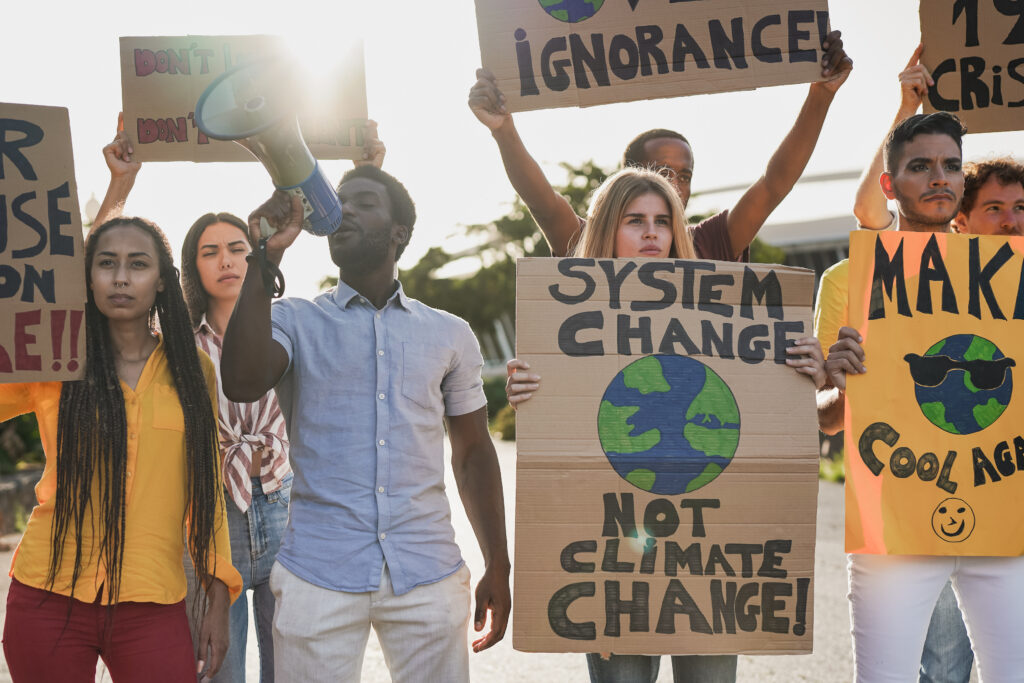
In the wake of the COVID-19 pandemic, new vaccines to combat the disease and contain the pandemic were made and led through clinical trials at record speed.
On December 11, 2020, the FDA provided Emergency Use Authorization (EUA) to Pfizer-BioNTech’s mRNA-based COVID-19 Vaccine (BNT162b2). A week later, EUA was issued to the mRNA-based COVID-19 vaccine from Moderna on December 18, 2020. About two months later on February 27, 2020, the FDA issued EUA to a third vaccine- J&J/Janssen’s more traditional virus-based COVID-19 vaccine. Subsequently, both the Pfizer-BioNTech and Moderna vaccines received full FDA approval while Janssen discontinued their vaccine production.
The vaccines changed the landscape of the pandemic substantially. Masking requirements were relaxed in many places for vaccinated individuals and the world slowly resumed the pre-COVID way of life. As of May 10, 2023, about 81% of the U.S. population over the age of 5 (270,227,181 people) had received at least one dose of the COVID-19 vaccine.
At this time, it has been about 3 years since the start of the COVID-19 vaccination drives. And we are learning increasingly more about the effectiveness of the vaccines against new and emerging variants and the side effects of the vaccines themselves.
Vaccine boosters to counter emerging variants
SARS-CoV-2, the virus that causes the COVID-19 disease has mutated many times since it first started circulating. A mutated version of the original virus is called a variant.
Many variants of the virus do not substantially change the way it acts. But sometimes, a variant acquires enough mutations in certain genes that result in increased transmissibility, disease severity, and greater escape from the body’s immune system even in people who have immunity against the virus through previous COVID-19 infections or immunizations. When such a virus also has a growth advantage over other circulating variants of the same virus, it is called a variant of interest (VOI). Naturally, this variant starts showing up more and more in the local and global population.
According to WHO, as of February 9, 2024, the currently circulating VOIs of SARS-CoV-2 are XBB.1.5, XBB.1.16, EG.5, BA.2.86, and JN.1. They have all descended from the Omicron variant.
The original versions of the Pfizer and Moderna vaccines and their bivalent boosters have now been discontinued. As of September 2023, a monovalent vaccine is available from both providers targeting the Omicron XBB.1.5 variant. The vaccine is also expected to provide protection against BA.2.86 and E.G.5. Another vaccine from Novavax (available as of October 2023) known as the Novavax COVID-19 Vaccine, Adjuvanted (2023-2024 Formula) also targets the Omicron XBB.1.5 variant but uses a different nanoparticles-based technology.
Long-term effectiveness against new strains
Almost 3 years after the initial original doses of COVID-19 were administered, the virus has changed so substantially that their effectiveness has “gradually diminished”. The Omicron variant has substantial immune escape from the immunity built from the original three doses of the COVID-19 vaccines. The fourth dose and subsequent future vaccines addressing new variants will be necessary to keep COVID-19 levels down.
However, data from children and adolescents indicates that having had at least one dose of Pfizer/BioNTech’s BNT162b2 vaccine had some long-term benefits against Omicron. The vaccine provided stronger immunity against the delta variant but now continues to provide definite though reduced protection against the Omicron variant.
Vaccinated adolescents who were 12-20 years old when they first got vaccinated were 86% less likely to get infected, 85% less likely to have serious illness, and 91% less likely to need admission to ICU compared to their unvaccinated peers.
Vaccinated children who were 5-11 years old when they first got vaccinated were 74% less likely to get infected with the Omicron variant, 76% less likely to have severe disease, and 85% less likely to need admission to ICU compared to their unvaccinated peers.
Both groups had a reduced risk of cardiac complications typically seen in a subset of people who get infected by COVID-19.

Monitoring adverse effects of COVID-19 vaccines
The CDC and FDA jointly run the COVID-19 Vaccine Safety monitoring system which uses the Vaccine Adverse Event Reporting System (VAERS). This is an online resource where anybody can report any long-term or short-term adverse effects they experienced after getting any COVID-19 vaccine (or any other vaccine) in the U.S. The goal is to inform the CDC of any side effects that may have not been seen in the vaccine’s clinical trials but can affect the general population.
Healthcare providers and vaccine manufacturers are required to report any adverse effects of the vaccines to this system. If an unexpected adverse effect is noticed, experts at the CDC rapidly study it so that the CDC can quickly react to the information as needed.
The data is open for everybody to access. The data is not curated though, and it is not possible to know if someone’s independently submitted adverse reactions are due to the vaccine or concurrent undiagnosed medical issues.
Long-term side effects of COVID-19 vaccines
Any side effects from the vaccines lasting longer than a few days are not common. Rarely, the following side effects have been observed:
1. Anaphylaxis.
Condition. severe allergic response to vaccination.
Occurrence. 5 cases per one million vaccine doses administered. Monitoring patients 30 minutes after receiving the vaccination further reduces this risk.
Who is most susceptible? Anyone of any age can get anaphylaxis. However, individuals who have other allergic conditions such as eczema or asthma are more susceptible.
Treatment. Anaphylaxis is an urgent medical condition that requires hospitalization, though administration of adrenaline or epinephrine can eliminate most manifestations of anaphylaxis.
2. Thrombosis with thrombocytopenia syndrome (TTS).
Condition. In TTS, there are blood clots that form in large blood vessels as well as a low platelet count.
Occurrence. 4 cases per one million doses of J&J/Janssen vaccine administered. The AstraZeneca vaccine can also cause TTS. Both vaccines have now been discontinued.
Who is most susceptible? Individuals who are 18-64 years of age, and especially women who are 30-49 years of age.
Treatment. Treatment often consists of administration of anticoagulants and plasma exchange.
3. Myocarditis and pericarditis.
Condition. Myocarditis is the swelling of the heart muscle. Pericarditis is the swelling of the outer lining of the heart.
Occurrence. Myocarditis/pericarditis can occur in 2-20 out of every 100,000 people who received the mRNA-based vaccine usually after the second dose.
Who is most susceptible? Males who are teens or in their early 20s.
Treatment. Medication and rest quickly resolved most cases of myocarditis and pericarditis caused by COVID-19 vaccines.
4. Guillain-Barré Syndrome (GBS)
Condition. In GBS, the body’s immune system mistakenly damages nerve cells. This can cause muscle weakness or paralysis.
Occurrence. 1 out of every 100,000 people who received the J&J/Janssen vaccine. The risk was reduced and presented for a shorter duration after the mRNA-based vaccines.
Who is most susceptible? Individuals over 50.
Treatment. Treatment often consists of intravenous administration of healthy antibodies (immunoglobulins) which can attack and stop the harmful antibodies that are damaging the nerves, or plasma exchange which filters the harmful antibodies out of the blood.
The information provided in our blog posts is for informational purposes only and is not intended as a substitute for professional medical advice, diagnosis, or treatment. Always seek the advice of your physician or other qualified health provider with any questions you may have regarding a medical condition. Never disregard professional medical advice or delay in seeking it because of something you have read on this blog.






